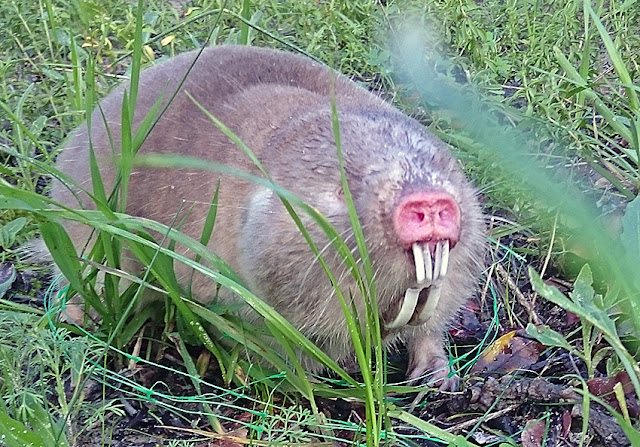 |
| Spring flowers at the West Coast National Park |
We were not disappointed. It was a beautiful sunny and windless day.
 |
| The ground was covered in flowers |
The birds were enjoying the show.
 |
| Black-Headed Heron (Swartkopreier - Ardea melanocephala) hunting amongst the flowers, also enjoying the view I'm sure |
The animals were feeling frisky.
 |
| A Cape Mountain Zebra (Kaapse Bergsebra - Equus zebra zebra) behaving like an ass |
But the most interesting surprise of the trip was brought to us curtsy of the insects.
 |
| With all the flowers around the bees were bound to be having a great time |
I had my window open while driving and every now and again some small bees would get sucked into the car, zipping right by my ear.
Stopping at a lookout point, I decided to roll open the rear window for the bees to get out. It was then that I noticed that these bees look a bit different to the usual honey bees. I decided to snapped a few photos before setting them free.
 |
| This is a type of Mining Bee |
I've been enjoying iNaturalist a lot recently, so the next day I decided to upload the photograph of the bee to the website, hoping to find out more about it. (See the observation over here.)
I was lucky, and the observation caught the eye of an iNaturalist user that was able to identify the bee as part of the Andrena genus. Thanks to him (and I guess me for uploading the observation in the first place) this turned out to be the first observation on iNaturalist of the Andrena genus in sub-Saharan Africa!
Sure, it is likely that somebody else has uploaded one of these bees to iNaturalist before, but this is a great example of how valuable the people are that help identify the observations. There is no way I'm able to tell on my own that this is a type of Mining Bee, yet thanks to international experts like this, who identifying observations by normal citizens like me, we can both help contribute to science and conservation - and in doing so have a lot of fun in the process. I've learnt a ton of fascinating new things since joining iNaturalist. Really exiting stuff!




















